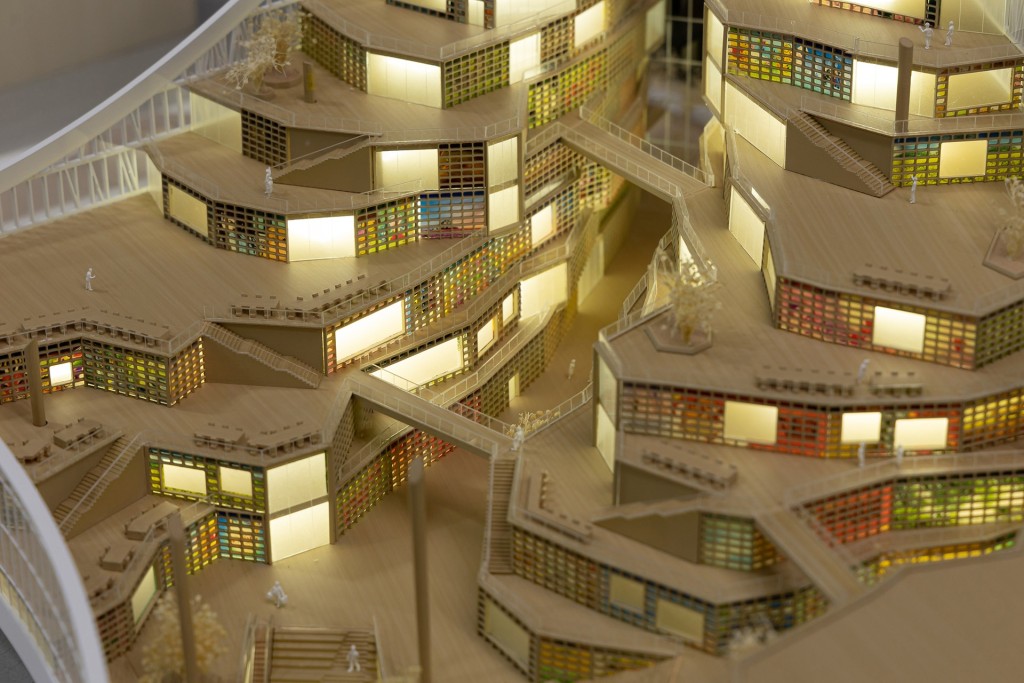 'Vast Canyon of Books' Splits Open in Stunning New Public Library in China, Wuhan Library © MVRDV Architects 'Vast Canyon of Books' Splits Open in Stunning New Public Library in China, Wuhan Library © MVRDV ArchitectsPoised to become one of the largest libraries in China, the new Wuhan Central Library takes inspiration from its geographical positioning at the confluence of two rivers. Just as the waters at the confluence of the Yangtze and Han rivers are pulled into a central channel, visitors are swept into the library as if into a monumental canyon, with sedimentary layers replaced by shelves of books. The 140,000-square-meter project connects to its surroundings via three large openings that will act as visual displays of life inside the building, sparking curiosity and intrigue. This distinctive, three-faced flowing shape celebrates the position of the “city of 100 lakes” at the confluence of two rivers, and will become a new recognisable landmark for Wuhan. Managed by Dutch architects MVRDV, the library celebrates the sculptural force of rivers, and is set to be the focus of a “city versus nature” exterior scene, with tall vertical windows looking out over Wuhan’s central business district, and a long horizontal windowed wall looking out on a large park coming as part of the project. “The topography of Wuhan was an important source of inspiration: we have this idea of a horizontal view towards the lakes and on the other hand, we have this more vertical view towards the city with the high rises,” says Jacob van Rijs, founding partner of MVRDV on their website. “This is nature versus the city, and the building is somehow focusing on this. I think this makes it an exciting place to gather.”   Wuhan Library © MVRDV Architects Wuhan Library © MVRDV ArchitectsLarge native trees will shade exposed areas of the interior from Wuhan’s hot climate. The advantage of using native vegetation is that little maintenance is needed to support their growth. Sets of angled slats fixed at regular intervals called “louvres” will coat the roof of the building to reduce heat absorption.“Openable elements for natural ventilation, combined with the use of smart devices and an efficient lighting system further reduce the building’s energy demands, while solar panels incorporated into the library’s flowing roof shapes provide the building with renewable energy,” the architects’ website explains. 'Vast Canyon of Books' Splits Open in Stunning New Public Library in China
|
